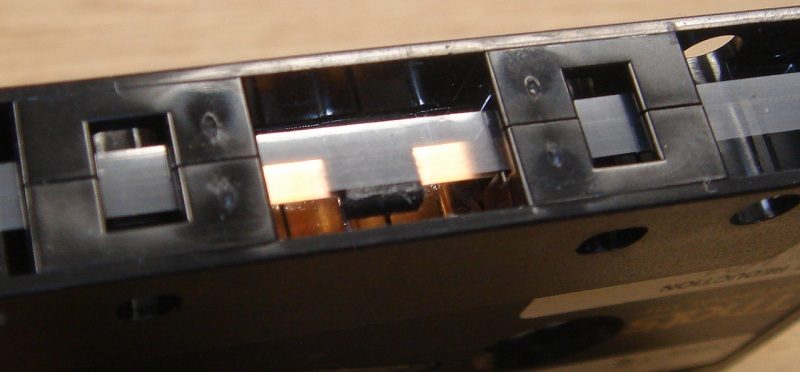We recently received a fascinating collection of tapes from the archive of Robert Chenciner, an ethnographer with over thirty years experience studying the cultures, human rights and current affairs of Daghestan.
Daghestan is located in the north Caucasus region, its neighbouring countries are Azerbaijan, Chechnya and Georgia, while its eastern border is flanked by the Caspian Sea.
In the early 1980s Robert had unique access to Daghestan and other parts of the Soviet Caucasus in the twilight years of the USSR.
During visits Robert made recordings of Daghestan’s rich culture. This included music, documenting ethnic instruments such as the Chagana, as well as singing and dancing.
Although Robert believes that claims to authenticity must be treated with suspicion, he nonetheless told me that these recordings document the traditional folk culture that was practiced in the villages of Daghestan.
These tapes also document the 31 mutually unintelligible languages spoken in Daghestan such as Avar which is spoken by 900,000 people.
Listen to excerpt of a tape from the collection. The tape had experienced mould growth and had snapped. It therefore needed to be repaired prior to transfer. Robert explains: ‘The recording was made in Untsukul c.March 1990. You can hear Russian being spoken with a heavy accent, some Kumyk and some Avar. It was joking and talk about who was I and where from.’
Type IV Metal Cassettes
When Robert travelled to Daghestan he was keen to get the most professional recordings he could. For this reason he used type IV metal audio cassette tapes, a tape formula that had been introduced in the late 1970s to offer better quality recordings.
By the mid 1980s, the tape tardis explains, these tapes
‘had been adopted by a lot of enthusiasts. They remained too expensive to be bought in bulk by the average consumer, but if you wanted to record something special – and particularly if you produced music yourself – you’d probably be highly attracted by the exceptional recording quality of a good metal cassette.’
The science behind the type IV cassette, according to the Museum of Obsolete Media, was to use ‘pure metal particles instead of metal oxides. This created a hard-wearing tape with superior frequency response and greater dynamic range.’
Since completing the recordings in the mid 1980s, as with so many of the tapes we receive at Greatbear, they have been tucked away in a drawer and out of circulation.
Due to being stored in poor conditions some of the tapes were displaying signs of mould growth.
Another problem some tapes exhibited was the degradation of the foam pressure pad. This had ‘stuck’ onto the tape and stopped it it from playing. In one case the tape had snapped as a result from a previous attempt at playback.
Fortunately this issue did not effect our ability to do the transfer. We use Nakamichi tape decks to do optimal audio cassette transfers. The transport design within Nakamichi machines doesn’t use the tape pressure pad to play back the tapes. This is because, Wikipedia tells us,
‘Nakamichi found that this pad provided uneven and fairly inaccurate pressure and was therefore inadequate for reliable tape/head contact. Furthermore, Nakamichi found that the pressure pad was a source of audible noise, particularly scrape flutter (the tape bouncing across the head, a result of uneven pressure), and also contributed to premature head wear. Nakamichi’s dual-capstan tape decks provide such accurate and precise tape tension that, unlike other decks, the cassette’s pressure pad is not needed at all.’
The insides of a Nakamichi machine that has no need of a pressure pad to play back tapes.
Re-publication plans
Recent interest from musicologist Stefan Williamson-Fa, the driving force behind getting the tapes transferred to digital files with Great Bear, will enable these unique recordings to be heard by new audiences.
These include what Robert believes to be the only recording of an Andi Zikr ritual. Banned by the Tsar and later the Soviets, the Zikr ritual proved to be a resilient part of Daghestan’s Sufi culture. Zikr involves a group rotating in a circle, stamping the ground and grunting in order to create a mystical and ecstatic experience.
Stefan and Robert have plans to make the transferred digital files available online.
Robert reflected that when he was collecting the tapes in the 1980s his imagined audience for the recordings was pretty small. With the possibility of online publication this audience has substantially increased.
Furthermore, through people uploading material to sites such as YouTube the amount of Daghestan’s culture that can be accessed on the internet continues to grow. Robert’s links with the academic community in Daghestan also means the recordings will gain exposure there as well.
It is no doubt that those interested in the cultural history of Daghestan will await the publication of these recordings with much excitement. When the website is available we will of course let you know!
***Many thanks to Robert Chenciner for talking to us about his collection, and to Stefan for putting us in touch***
